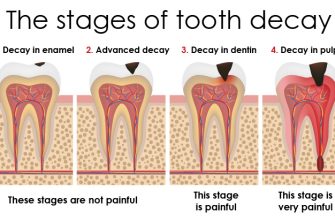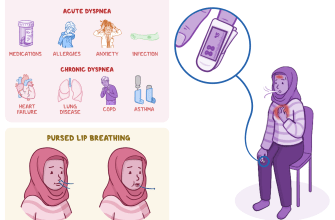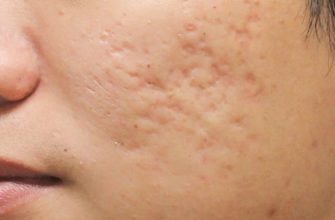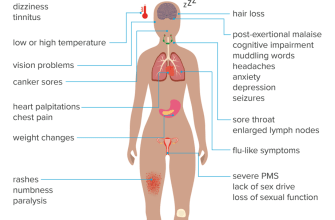Multiple lipomas, also known as lipomatosis, are a condition characterized by the presence of multiple benign tumors made up of fat cells. These growths can occur anywhere on the body and are usually painless. While lipomas are generally harmless, they can be aesthetically displeasing and cause discomfort if they press on nearby nerves or organs. In this article, we will explore the causes of multiple lipomas, their symptoms, diagnosis, prevention, and various treatment options available.
Causes of Multiple Lipomas
The exact cause of multiple lipomas is still unknown. However, several factors have been identified that may contribute to their development:
- Genetics: There is evidence to suggest that multiple lipomas can run in families, indicating a genetic predisposition.
- Adipose tissue dysfunction: Lipomas are believed to arise from an abnormal growth of fat cells. Dysfunction in the adipose tissue may play a role in their formation.
- Hormonal imbalances: Hormonal imbalances, such as those seen in conditions like hypothyroidism, have been associated with the development of lipomas.
- Age: Lipomas are more commonly seen in middle-aged individuals, suggesting that age may be a contributing factor.
Symptoms and Diagnosis
Multiple lipomas typically present as soft, rubbery lumps under the skin. They are usually painless but can cause discomfort if they grow large or press on nearby structures. Some common symptoms associated with lipomas include:
- Visible and palpable lumps under the skin
- Soft and doughy texture
- Slow growth over time
- Occasional tenderness or pain if pressing on nerves or organs
Diagnosing multiple lipomas usually involves a physical examination by a healthcare professional. In some cases, imaging tests such as ultrasound or MRI may be recommended to confirm the diagnosis and rule out any underlying conditions.
Prevention and Management
While there is no foolproof way to prevent the development of lipomas, certain measures may help reduce the risk or manage existing lipomas:
- Maintain a healthy weight: Obesity has been linked to an increased risk of lipomas. By maintaining a healthy weight through regular exercise and a balanced diet, you may be able to lower your chances of developing lipomas.
- Avoid trauma: Trauma to the fatty tissue can sometimes trigger the formation of lipomas. Be cautious and avoid any unnecessary injury to the affected areas.
- Regular self-examination: Perform regular self-examinations to monitor any changes in existing lipomas or the appearance of new ones. This can help in early detection and timely medical intervention if required.
While prevention strategies may help reduce the risk, management of existing lipomas often involves surgical removal.
Lipoma Removal and Treatment Options
Lipoma removal is typically recommended if the lipomas are causing discomfort, growing rapidly, or affecting the patient’s quality of life. There are several treatment options available:
Lipoma Surgery
Surgical excision is the most common method for removing lipomas. It involves making an incision over the lipoma, removing the tumor, and closing the incision with sutures. This procedure is usually performed under local anesthesia and can be done on an outpatient basis. Lipoma surgery is generally safe and effective, with a low risk of recurrence.
Liposuction
In some cases, liposuction may be used to remove lipomas. This technique involves inserting a thin tube called a cannula into the lipoma and suctioning out the fatty tissue. Liposuction is often preferred for larger lipomas or when multiple lipomas need to be removed.
Non-Surgical Options
In certain cases, non-surgical options may be considered for lipoma treatment:
- Steroid injections: Injecting steroids into the lipoma can help shrink the tumor and reduce symptoms.
- Lipoma aspiration: This involves using a needle and syringe to drain the fatty contents of the lipoma. However, this method may have a higher risk of recurrence compared to surgical removal.
Lipoma Natural Remedies
While there are no scientifically proven natural remedies for lipoma treatment, some individuals may opt for alternative approaches. It is important to note that these remedies have not been extensively studied, and their effectiveness is largely anecdotal. Some natural remedies that people may try include:
- Herbal poultices: Applying herbal poultices or compresses made from herbs like turmeric, chickweed, or flaxseed to the lipoma.
- Apple cider vinegar: Some individuals claim that applying apple cider vinegar topically or consuming it orally can help shrink lipomas.
- Dietary changes: Certain dietary changes, such as reducing processed foods and increasing the intake of fruits and vegetables, may be beneficial for overall health but have not been proven to specifically target lipomas.
It is important to consult with a healthcare professional before attempting any natural remedies to ensure they are safe and appropriate for your specific situation.
In Conclusion
Multiple lipomas are benign growths of fat cells that can occur anywhere on the body. While their exact cause is unknown, factors such as genetics, adipose tissue dysfunction, hormonal imbalances, and age may contribute to their development. Lipomas are usually painless but can cause discomfort if they grow large or press on nearby structures. Surgical removal is the most common treatment option, with lipoma surgery and liposuction being the primary methods. Non-surgical options and natural remedies may also be considered in certain cases. If you have concerns about multiple lipomas, it is best to consult with a healthcare professional for an accurate diagnosis and appropriate treatment plan.








